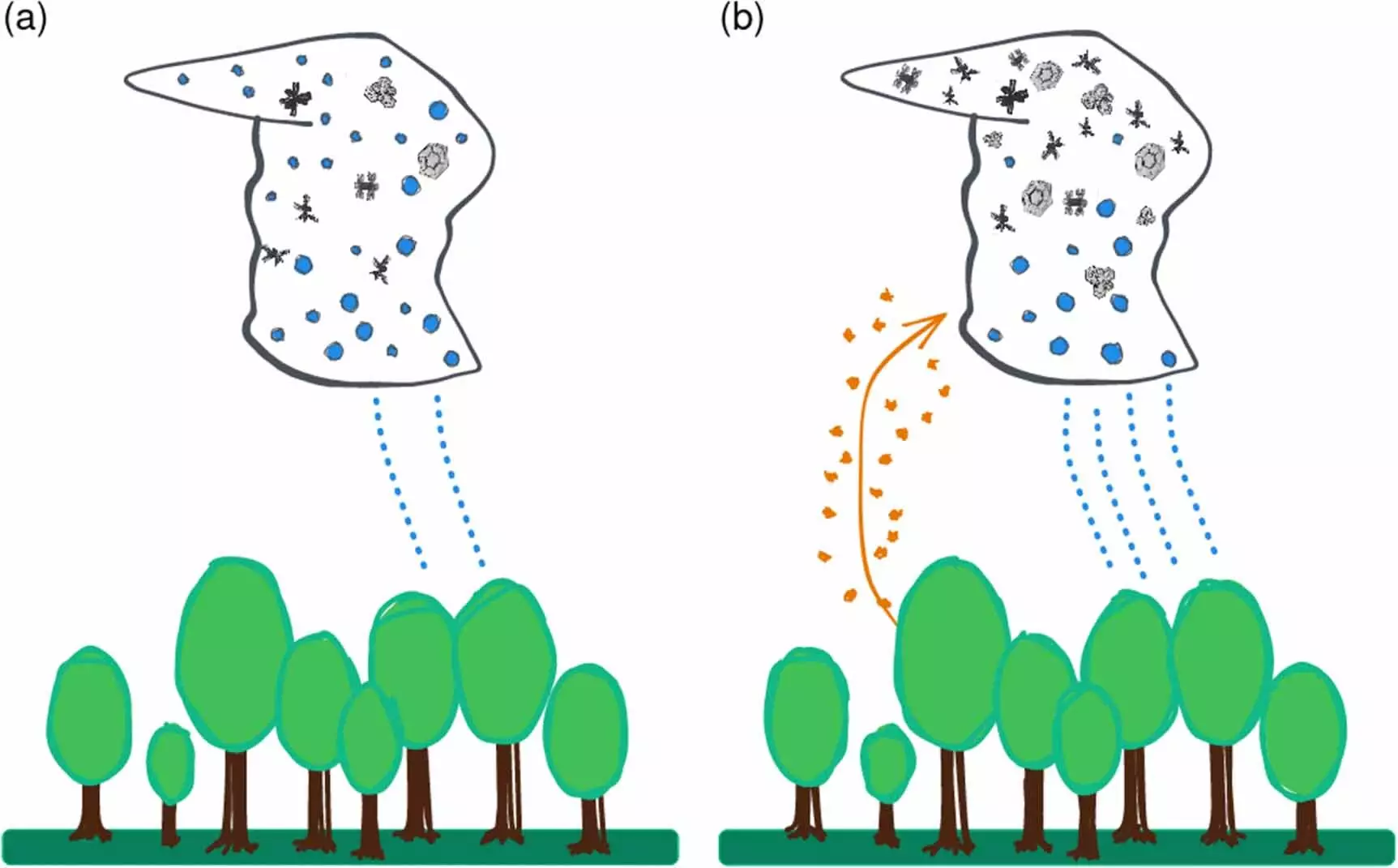Recent scientific research has shed light on an intriguing relationship between pollen concentrations and weather patterns, particularly in the context of increased precipitation. Observations from both ground-based and satellite sources in the United States indicate that heightened pollen levels during spring months significantly correlate with the formation of cloud ice and subsequent precipitation events. This phenomenon occurs even at remarkably low temperatures, ranging from minus 15 to minus 25 degrees Celsius. Dr. Jan Kretzschmar, the lead author of the study published in *Environmental Research Letters*, emphasizes that pollen operates as an ice nucleus, fundamentally altering the freezing temperature of water particles within clouds and thereby promoting precipitation.
The implications of this research are significant, especially as they expand our understanding of atmospheric processes. Without the presence of ice-nucleating particles (INPs) such as pollen, researchers note that water droplets in clouds typically only transition to ice at temperatures below minus 38 degrees Celsius. This stark temperature differential highlights the critical role that smaller particles, particularly those generated when pollen disintegrates in humid conditions, play in cloud dynamics. These smaller fragments, unlike the larger pollen grains that are short-lived in the atmosphere, can linger longer and significantly influence ice formation, especially during cold air incursions.
The context of anthropogenic climate change cannot be overlooked when discussing the recent findings. The research indicates that rising global temperatures are shifting the timing of the pollen season, extending its duration, and enhancing pollen concentrations in the atmosphere. By the end of the century, these trends are predicted to intensify, potentially culminating in more frequent and intense localized precipitation events. This could have wide-reaching implications for regional hydrology, agriculture, and ecosystem health.
Furthermore, the study highlights the broader importance of biodiversity in relation to weather phenomena. Large quantities of pollen are typically released by various plant species during the spring, a timing that has cascading effects on cloud formation and atmospheric ice content. As such, preserving biodiversity is not merely an environmental goal; it is crucial for maintaining the balance of weather systems. Understanding the interplay of different species and their pollen release patterns could be vital for future weather forecasting and climate modeling.
The joint research effort involved institutions such as the Institute for Meteorology at Leipzig University and the Leibniz Institute for Tropospheric Research highlights the importance of interdisciplinary collaboration. The findings bring forth critical questions regarding how pollen interacts with various climate factors and the potential for changes in regional precipitation dynamics. For scientists aiming to refine climate models, accurately simulating the effects of INPs like pollen is essential for making more precise predictions about climate evolution.
Moreover, as global temperatures continue to rise and biodiversity faces unprecedented challenges, understanding these intricate systems becomes paramount. The research urges scientists to explore the implications of pollen on climate and, in turn, calls for more extensive studies that could unravel the complexities of ecological systems and their interactions with atmospheric phenomena.
The research presented by Dr. Jan Kretzschmar and his colleagues opens a new chapter in our understanding of meteorology. The interconnectedness of pollen and precipitation highlights a vital aspect of climate science that has often been overlooked. As we confront the realities of climate change and biodiversity loss, understanding the minor yet significant role of pollen in the atmosphere could provide insights necessary for mitigating extreme weather events in the future. The necessity for research that comprehensively examines these interactions cannot be overstated if we are to navigate the challenges posed by our changing climate effectively.


Leave a Reply